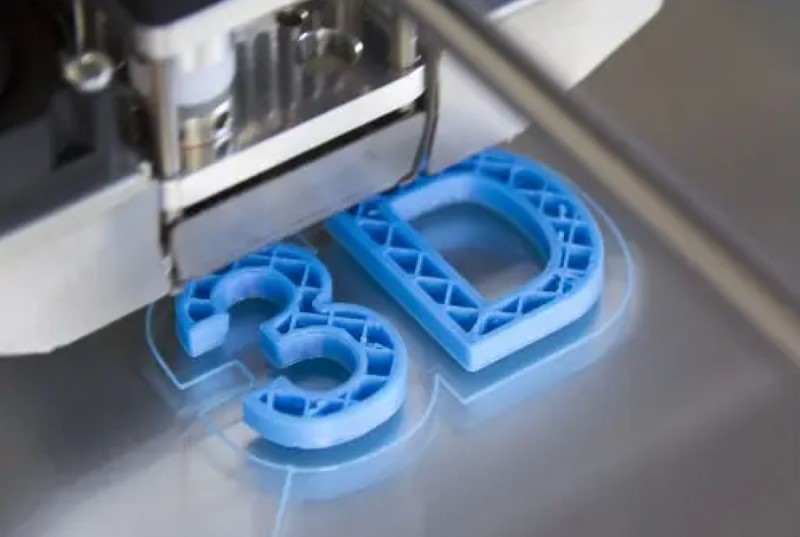The 3D printing industry has come a long way since version 1.0. But as a struggling member of it, it’s time for us to slow down, take a fresh look, find our way, and get going again. We look forward to seeing each other at the next crossroads, and hopefully we’ll all still be struggling then.
On the bright side: continued growth and a future that will get better and better.
According to the latest Wohlers Report 2024 by Wohlers Associates, the global additive manufacturing (3D printing) industry surpassed the $20 billion mark for the first time, reaching $20.035 billion in sales, an increase of 11.1% from the previous year. In addition, a number of research organizations have also released industry reports based on different application areas, from aerospace to medical and construction, ceramics, and even consumer products, the penetration of 3D printing technology has increased significantly.
From a domestic perspective, in the first half of 2024, the total export quantity of China’s 3D printing equipment reached 1,829,900 units, an increase of 40.29% year-on-year; the total export value reached 4.267 billion yuan, an increase of 77.18% year-on-year. It is expected that the annual export is expected to exceed the ten billion yuan mark.
Among them, industrial-grade 3D printing manufacturers are actively expanding overseas markets, like Platinum Lite, Huashu Hi-Tech and other enterprises have set up subsidiaries abroad to sell more cost-effective equipment to all parts of the world, which further enhances the popularity of Chinese brands. In the consumer-grade field, Chinese enterprises are in the global market has occupied an absolute advantage, giving rise to a number of annual revenue of more than 1 billion yuan of giant enterprises, such as the Creative 3D, Top Bamboo Technology, Zongwei Cubic and Intelligent Pie, and so on.
If the industrial-grade 3D printing is more “going out”, then the consumer level shows a “from the outside to the inside” development trend. In recent years, with the rise of 3D printing farms, the domestic sales of local 3D printing equipment has increased significantly. Ultimately, with the continuous expansion of application scenarios, 3D printing has gradually moved from the conceptual stage into the actual production link, and with the gradual deepening of people’s understanding of 3D printing technology, we have reason to believe that the entire 3D printing market will usher in a prosperous development.
On the downside: the industry is in a period of adjustment and facing challenges.

Despite the overall upward trend of the industry, the challenges brought by the current global economic environment cannot be ignored. In recent years, the tightening of financing channels has put some 3D printing companies under financial pressure, while cases of mergers and acquisitions and closures in the industry are also on the rise. To some extent, this phenomenon reflects that the industry is entering a natural period of structural adjustment. For some enterprises with fragile capital chains and insufficient technological innovation, this means either seeking integration or facing the risk of being eliminated from the market.
In 2024, industry consolidation is particularly evident abroad. Both the delisting or closure of several listed 3D printing companies and the merger tug-of-war between industry giants reveal a volatile market. In contrast, there have been fewer cases of mergers or closures in China, and although a small number of companies have experienced this, the overall scale and frequency is relatively low.
However, this is not an all negative phenomenon. Every emerging industry goes through similar market shuffling in the process of moving from germination to maturity. For the 3D printing industry, it may have also ushered in an opportunity for resource consolidation. Although some companies are difficult to sustain in the short term, the survival of the fittest in the market will release more high-quality resources for the industry and promote the further growth of leading companies and technology innovators.
The key to future development lies in: finding a niche and continuing to innovate.
Sometimes persistence doesn’t always bring success, and that’s the reality. The market is changing so fast that it is no longer feasible to work behind closed doors, and companies need to be more active in exploring new technologies, business models and applications. In this process, “trial and error” is especially critical. As long as the cost can be controlled, enterprises should boldly try new application scenarios and solutions, through innovation to find market breakthroughs.
Against the backdrop of increasing competition in the industry, companies must find a clear positioning if they are not to be eliminated. Whether to continue to focus on a specific vertical or to seek cross-industry cooperation are strategic directions that companies can consider. the flexibility and diversity of 3D printing technology itself gives companies enormous room for innovation, and the key lies in how to capitalize on this advantage to gain a foothold in the market.
Despite the uncertainties in the current industry situation, the future of 3D printing technology is still full of hope. Challenges often breed new opportunities, enterprises as long as they can seize the opportunities in the changing market, continuous innovation, it is possible to stand out in the fierce competition.












